The author tells me he used to think “What good are Bob Cumberford’s design critiques on cars made decades ago if it’s too late for the automaker to change the design?”
Then he had an epiphany of sorts and realized that people want to read what made a classic design so inspirational. They like it but can’t put their finger on why they like it.
As a former owner of a Bizzarrini GT 5300 Strada I do not agree with all that Wyss writes. I am happy to have him express his opinions here but I have added footnotes to share my opinions and some facts. Footnotes will be designated by brackets on each side of a number [x] – see the corresponding footnotes at the end of the article.
Here is the Wyss take on the Bizzarrini GT 5300 Strada.
Mike Gulett, Editor
by Wallace Wyss –
The Bizzarrini was conceived of by Iso consultant Ing. Giotto Bizzarrini first as the Iso Rivolta A3/C Grifo, made by Iso to a body design by Giorgetto Giugiaro, then working at Carrozzeria Bertone. There was a street version, the A3/L which became the Iso Grifo GL, and a race version A3/C which eventually became the Bizzarrini GT 5300. This critique is confined to the production GT 5300 Strada (the street version of the A3/C). Are we confused yet?
The way the car got to be branded Bizzarrini was that Renzo Rivolta, owner of Iso, disliked his sports car to be so low, not fit for businessman use, so he had Giorgetto Giugiaro of Bertone design a higher sitting car, more comfortable, and made of steel at one third the cost of the alloy body of the A3/C.
Bizzarrini, wanted to leave so they parted ways, but Bizzarrini had fortuitously trade marked the Grifo name so he only gave it up when Renzo gave him the A3/C design, which he was no longer going to make anyway. Renzo sold over 400 of the steel-bodied Iso Grifo GLs so he had made the right choice for him and for Iso. And Bizzarrini got to make over 100 GT 5300 Stradas under his own name before his empire collapsed, so the result of the “divorce” was that the enthusiast world got two great Italian marques out of one!
Design Critique
FRONT The front headlamps, admittedly, are from Ferrari inspiration where Bizzarrini worked for many years but the clever touch was how wide and luxuriant the headlight chrome is-it makes a difference when the chrome surround is one inch wide as opposed to half an inch on the Intermeccanica Italia.
And Bizzarrini snuck into the US before the headlight laws took effect because once you remove the plexiglass bubbles it de-masculates the car just as Intermeccanica Italias were sold with and without plexi bubbles but look far less exciting without the chrome headlight surrounds.
The grille is interesting because it is so minimalist, there is no grille surround. Instead nothing more than a chrome bumper with bodywork above with only a mailbox sized slit on each side of the center. Most of the air is taken in below the bumper. [1]
SIDE Going out on a limb here but the side view is one of the greatest sports car shapes in the 20th century because it gave new meaning to the phrase “low slung.” The angle of the rear windscreen is as far as you can go and still see out of it. The front windscreen is also angled as far as you can probably legally go. The scooped out air tunnel on the side of the rear fenders is also a steal from racing Ferraris but done well. The door handles are Fiat 850 derived but minimalist again. [2]
The flat surface of the side of the rear bumper is a good touch, separating it from the normal blade look. The vertical side vents are another stroke of genius–not grates, not perforations but two vertical slots surrounded by luxuriant chrome. [3] The “handwritten” style of chrome on the side of the roof a bit Hollywood but an obsession of Italian designers at the time. Nobody did it better than Lamborghini on his first prototype where his whole name was “written” out handwriting style in chrome.
The Cobra 289 style additional side vents are a little after thoughtish, as if he had seen them on Cobras and thought why not. [3] The flat sides of the body between the wheel cutouts always bothered me, why couldn’t they roll them under? [4] I think when Salvadore Diomante made some Bizzarrini Stradas after the factory closed, he added rolled under side panels where detachable rockers are on Detroit cars.
REAR Not sure what the two grates above the rear trunk lid are venting from. Maybe they vent air from passenger compartment if you drive with the windows open? That would prevent the rear window blowing out. But the grates have too wide a surround and look sort of bathroom-ish. [5]
The car has no rear spoiler, though the Daytona coupes and Aston Martin DB racers proved by that time they were necessary. Maybe the Kamm effect tail was sufficient to make a spoiler unnecessary. [6] The small round taillights are minimalist (which I define is “no more than is needed”) and don’t need chrome surrounds.
INTERIOR I know Giugiaro liked the gauges in a row his Maserati Ghibli for Ghia for instance but that was the second series Bizzarrini. The first ones had a horrible dash idea of gauges stuck down in little caves on the dash. The interior is a big let down, after the sophistication of the exterior, like meeting a beautiful girl who can’t cook (I know, I know, cooking isn’t everything). [7]
One tribute to how good the original was designed is that no one trying to revive it had captured the essence of the original production car. All they come up with is the same general shape but everything is wrong, an insult to the original.
IN SUM The GT 5300 Strada is a tremendous tribute to Giugiaro that, like his De Tomaso Mangusta for Ghia, his design has stood the test of time well. It’s a good argument (I know Detroit designers don’t like to hear it) for the argument that one man with consummate taste should do the whole car bumper to bumper. I would even say the small mistakes (like the industrial-looking rear deck grates) are more likely the failure of suppliers than the designer. The suppliers just couldn’t do his original design with such a small order. The result was like ordering a fine hand tailored suit but having it arrive with cheap buttons.
When I saw the blue Bizzarrini GT5300 Strada arrive in Malibu at the crack of dawn on Dec. 8th, I felt it made a stronger design statement than almost any of the vaunted supercars of the last few years with their fins, vents, scoops, wings, yadda yadda. They are all trying too hard to look macho when the GT5300 Strada does it so simply and effortlessly. [8]
If Giugiaro had quit car design cold after the GT 5300 Strada he still would be recognized as the major car designer of the 20the Century.
THE AUTHOR: Author of 18 car books, Wyss has been a guest lecturer at the Art center College of Design. His oil portrait of a Delahaye hangs in the Mullin Museum. He is presently making two oil portraits of the Bizzarrini GT 5300 Strada.
Footnotes by Mike Gulett
[1] Most of the air is taken in below the front bumper helped out by two electric fans in front of the radiator controlled by one of the toggle switches on the dashboard. The mechanical fan sits near the middle of the engine bay and is likely of no use because it is so far away from the radiator. The race cars had the mechanical fan removed because it was unnecessary weight and drag on the engine. There are also two air intakes on the hood near the front facing toward the driver.
The chrome headlight surrounds were removed by some owners due to personal preference and naturally they were not used on race cars.
[2] The author is referring to the doors handles on the Series 2. The Series 1 door handles are beautiful sculptures. See the photo.
[3] All vents on the GT 5300 are there for a purpose, not for looks.
[4] The rocker panels are not rolled under likely because each one contains a 7.5 gallon fuel tank in addition to the 20 gallon fuel tank behind the passenger compartment.
[5] These two vents just below the rear window allow air to exhaust from under the car just behind the inboard brakes. There are funnels directing air over the brake discs. This allows for the air to flow up from under the car and possibly pulling down the read end.
[6] The original owner of my former GT 5300 Strada was Ken Phillips who designed and had made a front air dam that pushed the front end down at speed because he told me “at about 150 MPH the front end gets light”. His front air dam solved that problem.
[7] The original dash board is now accepted by most people as the most beautiful, functional and elegant. It was modeled after Ferrari race cars. The three gauges directly in front of the driver are the main items that a race driver wants to see: the oil temperature, oil pressure and engine coolant temperature. The other gauges: tachometer, speedometer and gas fuel level gauge were located to the right on the dashboard. And the ignition switch is to the left of the steering wheel like a Le Mans race car.
At least one car journalist complained about this layout in a test drive report which prompted Giotto Bizzarrini to change the dashboard layout and place the tachometer and speedometer in front of the driver with the other gauges over to the right. He also added wood veneer and placed the ignition switch in the steering column to the right of the steering wheel.
[8] Yes indeed I could not have said it better myself. Many times I drove my Bizzarrini GT 5300 Strada onto a show field and watched people stop and stare. Some even followed me onto the field and surrounded the car before I had a chance to unpack.
Let us know what you think in the Comments.

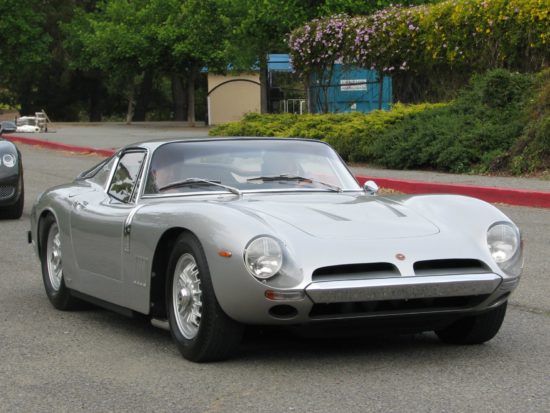

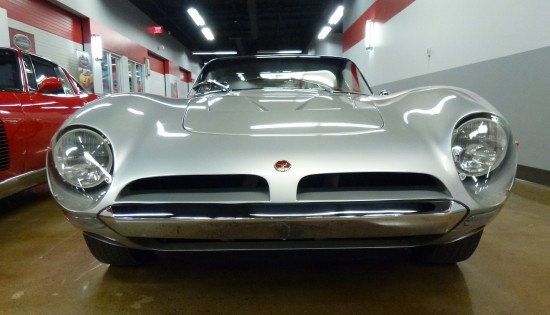
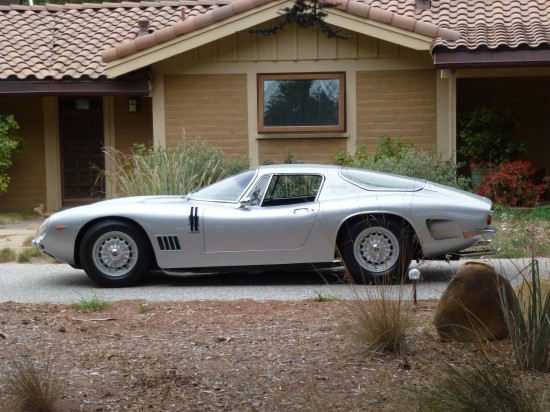
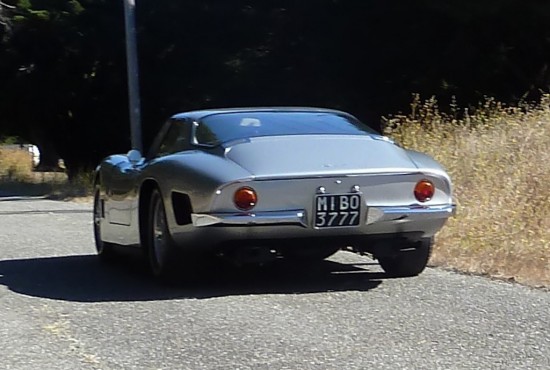
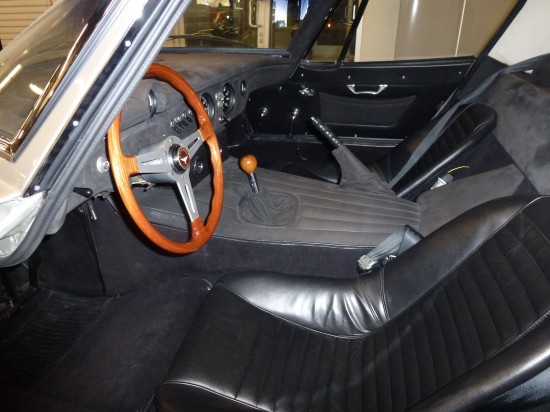

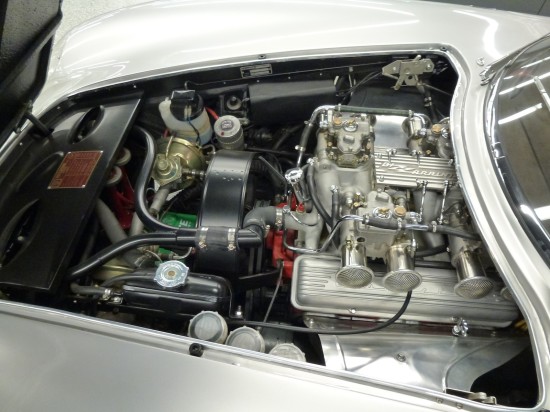
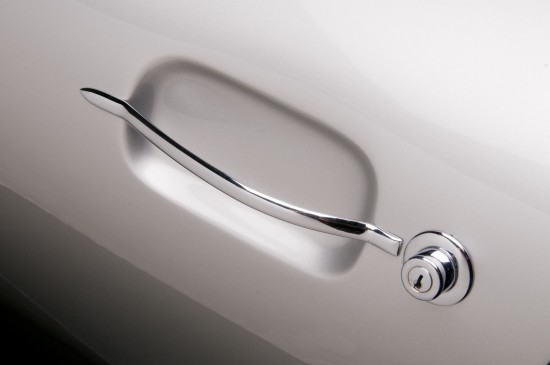
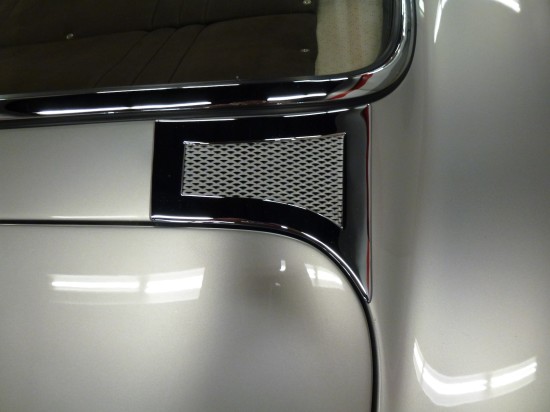
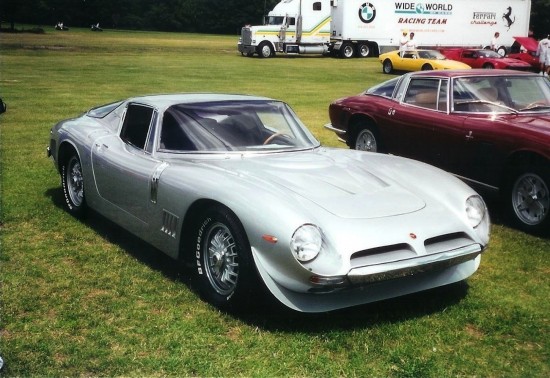
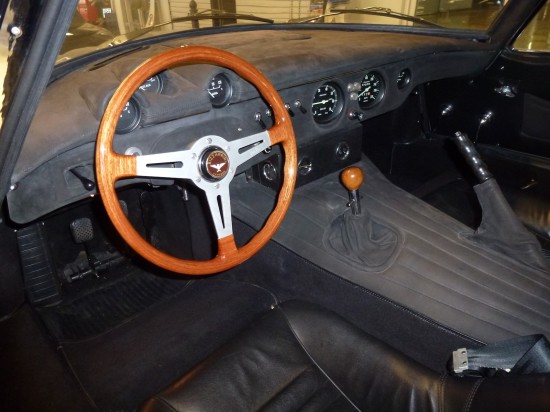
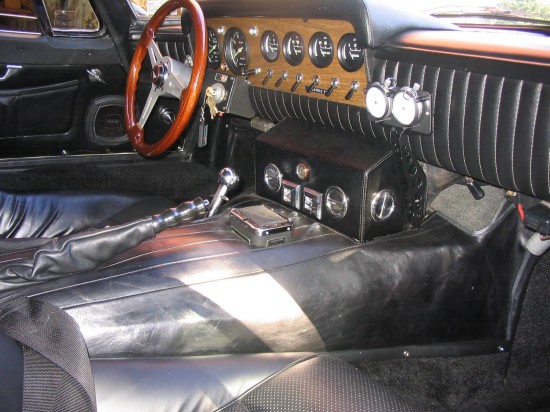
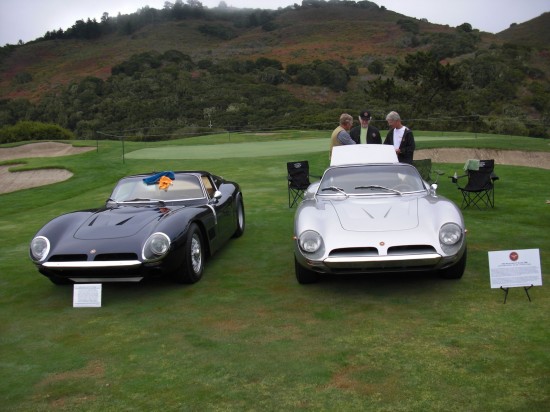
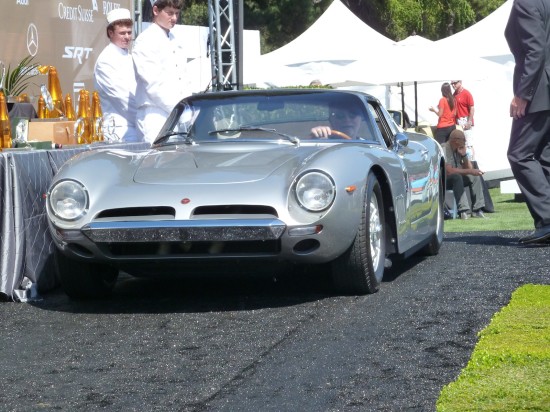




Great article, I really enjoyed it! It did work out well for both Giotto and Renzo.
Great article but Italias were never offered with plexi headlight covers. And you see with or without chrome surrounds are aftermarket…just sayin!
I never noticed just how elegant the door handles are. Do you know the venue for the car in the third photo?
Dan,
The third photo (head on shot) was taken at Club Auto Sport in San Jose. Here is another one from that day and more are at this link:
https://mycarquest.com/2013/06/a-big-difference-in-the-experience-of-driving-an-iso-grifo-and-a-bizzarrini-gt-5300-but-what-great-fun-there-is-in-both.html
The Strada is an interesting car for sure but the straight slab sides have always bothered me, the Europa was a prettier and more balanced design in my opinion, just suffered from a lack luster engine…
Jim,
You are the design expert and I am just an observer. I believe the slab sides were more aerodynamic and maybe the door sill gas tanks were a reason as well. Giotto’s only goal was to win races not beauty contests.
Great article Mike. Your Grifo was gorgeous as I remember it and wish I’d had the chance to see your Bizzarrini. Both stunning cars. The Series 1 Bizzarrini door handles are works of art. Love the dash too. Any regrets selling either one? I know I regret selling so many of the cars I’ve had in the past!
Thanks for the repost. I either missed it the 1st time or forgot (most likely). Great pictures!
The Iso Rivolta, and probably the Grifo, also vents the rear brakes upward in a similar fashion. An argument for Bizzarrini’s influence on Iso or vise versa depending upon which Bizzarrini’s involvement with Iso story you adhere to.
Bruce,
You did not miss this – it is not a repost but new original content.
The air vent channels behind the inboard rear brakes are built into the chassis so they are in the Iso Rivolta GT where I believe they vent out the vents on the C pillars (see the attached photo). On the Grifo they vent out the tops of each rear fender (on the left a dedicated vent and on the right they vent out the gas filler lid).
Attached is a photo of an Iso Grifo (No. 101) where the vents on the top of the rear fenders can been seen (the one on the right in the gas cap lid).
Attached is a photo of the Grifo A3/L Prototype.
The A3/L has the vent on the left fender and a vent on the right fender. There is, however, a gas tank filler cap under the right fender vent as on the production model. The production model has a key lock for access and the A3/L does not.
Attached is a photo of Grifo No. 009 before it was fully restored when I was considering buying it. The owner in the photo is Bob Evans in Burbank.
For some reason Iso deleted these air vents on the first few Grifos (maybe the first 10 or 11?)
Grifo No. 009 does not have the air vent on the top left fender to match the gas tank filler opening on the right fender. The gas filler cap lid does not have air vents.
I haven’t photographed a Europa all the way around but just judging from this rear 3/4 view here it seems like the back window was overwhelmingly large, What hurt it I think it had the taint of being the little ‘un” like the Dino did in relation to V12 Ferraris . But that didn’t hurt the value, I have heard of 246GTS Dinos going for over $400,000 lately, more than a lot of V12 Ferraris.
As a reminder the Europa was to be the car that saved Bizzarrini by offering a less expensive exotic car… however they were too little too late and I believe only 12 were finished… the smaller engine and car was to be more economical as well having a fastback rear window that opened for the small amount of luggage you could carry was an attempt at practicality and was of course a styling feature as well… but you could be correct that the small displacement smaller car could have been too removed from the Bizzarrini image as well..
A very good article, thank you. I like the “point – counter point”. Overall it gives the reader a balanced view and allows the reader to make up their own mind on the subject. Lovely cars to be sure. The only modern supercar which comes close IMO is the McLaren Speedtail, where form follows function in a very pleasing way.
Very nice article, and I agree its interesting to note and understand what customers like. Did Giugiaro really design the 5300 Strada? I know the car had a Bertone badge on it , but there are many who would argue that the car was designed in house at Bizzarrini/ Autostar . But why the Bertone badge? Was it for marketing ? Branding the A3C and the Grifo together. I feel the design may have a similar history to the Intermeccanica Italia. Scaglione gets the credit for the design, but it was Bob Cumberford an American who originally penned the lines. It is fact that Scaglione came in and cleaned up the design and helped with the interior. This we know because there is film of Scaglione inside an early Torino (later called Italia) pointing out details. It’s also known that the design of the Bizzarrini Europa was done by a Bizzarrini employee . Its unknown who designed the Bizzarrini P538 , but it looks very similar to Giugiaro’s early Lamborghini Miura design. Yes Giugiaro did a Miura design as well as Vignale. I know a lot of people don’t like the slab sides on the 5300 Strada, would Giugiaro design that? I think all of Giugiaro’s cars have the lower valance curved inward, including the folded paper designs like the Lotus Esprit and the Bizzarrini Manta. Bizzarrini knew that slab sides it were good for aerodynamics and you could fit the big side gas tanks in. Like many much of Bizzarrini’s history the designs are shrouded in mystery.
Good article but one important mistake. Giugiaro has been asked for cleaning the design. The A3C was penned by Pietro Vanni from Livorno, close friend of Giotto Bizzarrini. “La carrozzeria della IA3 fu delineata da un disegnatore livornese, Piero Vanni, molto amico dell’ingegner Bizzarrini, che aveva tracciato il primo schizzo su una lavagna. Il figurino predisposto da Vanni fu portato a Modena alla Sportcars di Piero Drogo, che ne ricavò un mascherone in filo d’ac-ciaio e poi costruì la carrozzeria. Giugiaro venne a vederla e suggerì di stringerla nella parte posterio-re, noi invece l’allargammo sempre più, per ospitare cerchioni via via più larghi, fino a 9” Source : MONOGRAFIA Associazione Italiana per la Storia dell’Automobile107
Translation:
The IA3 bodywork was outlined by a Livorno-based designer, Piero Vanni, a close friend of the engineer Bizzarrini, who had drawn the first sketch on a blackboard. The sketch prepared by Vanni was brought to Modena at Piero Drogo’s Sportcars, who made a steel wire mask and then built the bodywork. Giugiaro came to see it and suggested tightening it at the rear, but we widened it more and more, to accommodate gradually wider rims, up to 9 “Source: MONOGRAPHY Italian Association for the History of the Automobile107
The name Vanni is news to me. I wonder why, in accepting praise for the Iso Grifo A3C Giugiaro didn’t introduce Vanni, Maybe because he was too low down on the totem pole which is why when Bill Mitchell introduced the Stingray race car he didn’t mention Pete Brock, then just 18 or 20 and but an intern, Now some 60 years later Brock is saying he designed the car.